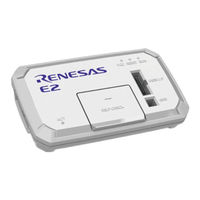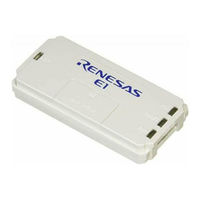Renesas E20 Manuals
Manuals and User Guides for Renesas E20. We have 4 Renesas E20 manuals available for free PDF download: User Manual
Renesas E20 User Manual (55 pages)
Emulator
Brand: Renesas
|
Category: Computer Hardware
|
Size: 0 MB
Table of Contents
Advertisement
Renesas E20 User Manual (55 pages)
Brand: Renesas
|
Category: Computer Hardware
|
Size: 0 MB
Table of Contents
Renesas E20 User Manual (45 pages)
Brand: Renesas
|
Category: Computer Hardware
|
Size: 0 MB
Table of Contents
Advertisement
Renesas E20 User Manual (40 pages)
Emulator
Brand: Renesas
|
Category: Computer Hardware
|
Size: 0 MB



